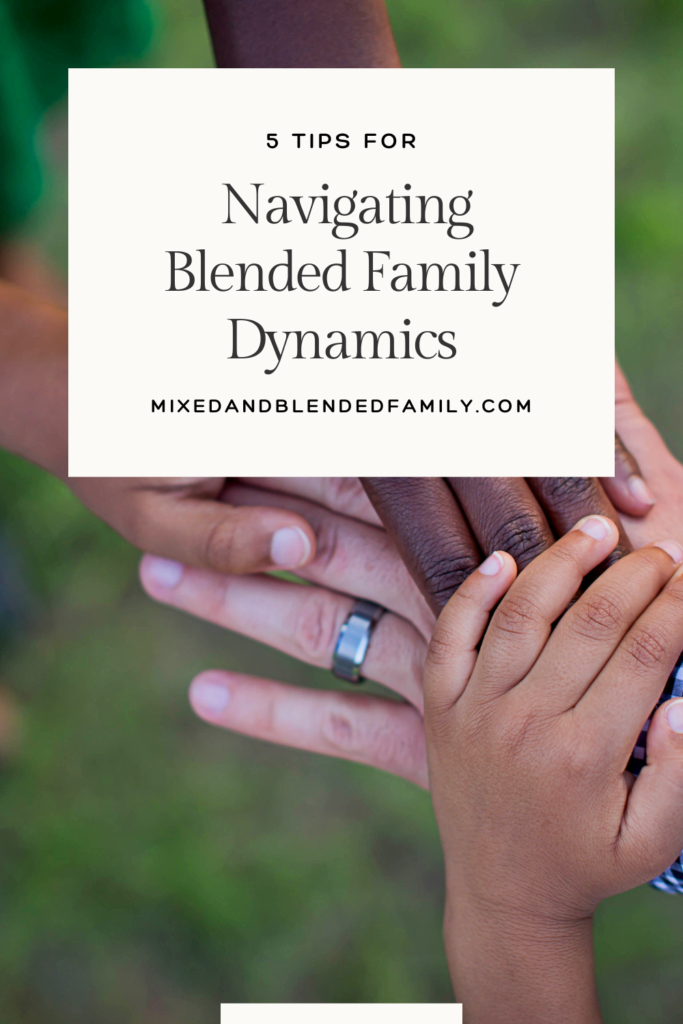
Building Bridges in Blended Families: The Path to Harmony
Building Bridges in Blended Families: The Path to Harmony
Imagine trying to merge two rivers into one seamless flow. That’s the essence of creating a blended family—bringing together different histories, traditions, parenting styles, and emotional landscapes into a cohesive and loving unit. With approximately 16% of children in the United States living in blended families, this family structure has become increasingly common, yet the challenges remain as complex as ever.
If you’ve recently formed a blended family or are struggling with ongoing dynamics, you’re not alone. The journey toward family harmony may seem daunting, but with intentional effort and the right strategies, you can build strong relationships and create a nurturing environment where everyone thrives.

In this comprehensive guide, we’ll explore five essential strategies for navigating blended family dynamics successfully. These evidence-based approaches have helped countless families transform conflict into connection and uncertainty into understanding.
1. Establish Realistic Expectations and Timeline

When families blend, there’s often an unspoken expectation that everyone will immediately bond and function as a cohesive unit. This expectation sets everyone up for disappointment and frustration. Research consistently shows that blended families typically need 2-5 years to fully integrate and develop their own functional dynamic.
Understanding the Adjustment Period
The adjustment period for blended families follows a relatively predictable pattern:
- Months 1-6: The “honeymoon phase” where everyone is on their best behavior
- Months 7-12: Reality sets in as differences in parenting styles, household rules, and personalities emerge
- Years 1-3: Working through conflicts, adjusting expectations, and developing new family traditions
- Years 3-5: Establishing a new family identity and more stable relationships
Understanding this timeline helps normalize the challenges you’ll face. Rather than seeing conflicts as signs of failure, you can view them as natural steps in your family’s evolution.
Creating Gradual Integration
Instead of forcing immediate closeness, focus on:
- Planned family activities that allow relationships to develop naturally
- One-on-one time between stepparents and stepchildren without pressure to form instant bonds
- Celebrating small wins rather than expecting perfect harmony
- Regular family meetings to discuss what’s working and what needs adjustment
As one stepmother shared: “When I stopped trying to be an instant mom and started being myself—a caring adult in their lives—my relationship with my stepchildren improved dramatically. Five years later, we’ve developed our own special bond that’s different from but just as meaningful as their relationship with their biological parents.”
2. Develop Consistent Parenting Approaches
Conflicting parenting styles can create some of the most significant tension in blended families. Children who navigate between different households with different rules experience confusion and may exploit inconsistencies.
Creating a United Front
Research shows that children thrive with consistency. To develop a unified approach:
- Hold regular co-parent meetings to discuss discipline approaches, screen time limits, homework expectations, and daily routines
- Document agreed-upon rules that apply in both households when possible
- Respect differences while working toward consistency on major issues
- Present a united front to the children on important matters
- Allow the biological parent to take the lead on discipline initially while the stepparent builds relationship
Navigating Different Parenting Philosophies
If you and your partner have fundamentally different parenting philosophies:
- Identify core values you both share about raising children
- Compromise on non-essential issues while holding firm on safety and respect
- Consider family counseling with a therapist experienced in blended family dynamics
- Revisit and revise your approaches as children grow and family dynamics evolve
Dr. Patricia Papernow, a leading expert on blended families, recommends: “The biological parent should handle most of the discipline early on, with the stepparent providing backup. As relationships develop, the stepparent can gradually take on more parenting responsibilities.”
3. Prioritize the Couple Relationship While Balancing Child Needs
The foundation of a successful blended family is a strong relationship between the adults. Unlike first-time marriages, blended family couples face the immediate challenges of parenting before they’ve had time to solidify their relationship.
Nurturing Your Partnership
To strengthen your relationship amid parenting demands:
- Schedule regular date nights away from the children
- Create daily rituals of connection, even if just 15 minutes of uninterrupted conversation
- Present a unified front to all children, regardless of biological connections
- Support each other’s parenting while respecting boundaries with stepchildren
- Seek couple-focused support through counseling or support groups specifically for blended families
Balancing Relationship and Parenting Priorities
Many blended family couples struggle with guilt about taking time for their relationship. Remember that modeling a healthy partnership is one of the greatest gifts you can give your children. Studies show that children in homes with strong parental relationships show better adjustment regardless of family structure.
As relationship expert John Gottman emphasizes: “The quality of the relationship between co-parents is a stronger predictor of child outcomes than family structure.” In other words, how well you work together matters more than whether you’re a blended family.
4. Address Loyalty Conflicts and Emotional Complexity
Children in blended families often experience loyalty conflicts—feeling that enjoying time with a stepparent somehow betrays their biological parent. These complex emotions can manifest as resistance, anger, or withdrawal.
Normalizing Complex Feelings
Help children navigate emotional complexity by:
- Explicitly giving permission to love and respect all parents
- Creating a judgment-free zone for expressing difficult emotions
- Using books and stories about blended families to help children articulate feelings
- Avoiding speaking negatively about ex-partners or competing for children’s affection
- Considering family therapy if emotional struggles persist
Supporting Children Through Transitions
The constant transitions between households can be emotionally taxing for children. Develop transition rituals that help children adjust:
- Predictable routines for the first few hours after a transition
- A special welcome-back activity that helps reconnect
- A comfortable space that remains theirs in both homes
- Communication tools appropriate for their age to express transition-related feelings
As one 12-year-old from a blended family shared: “What helped me most was when my stepdad told me it was okay to love my real dad and that he wasn’t trying to replace him. That made me feel like I didn’t have to choose, and I could just relax and be myself.”
5. Create New Family Traditions While Honoring Existing Ones
Family traditions create a sense of belonging and identity. In blended families, negotiating which traditions to keep, which to modify, and which new ones to create can be challenging but rewarding.
Balancing Old and New
Build your blended family culture by:
- Discussing the meaning behind important traditions from each original family
- Creating space for grief over traditions that may need to change
- Involving all family members in creating new traditions specific to your blended family
- Being flexible about holidays and special occasions, possibly celebrating multiple times
- Documenting your journey through photos and stories that capture your emerging family identity
Building a Shared Family Narrative
Research by psychologist Marshall Duke shows that children who know their family’s stories—including how the family has navigated challenges—show greater resilience and stronger identity. Create opportunities to share stories from all branches of your family tree and to create new stories together.
One stepfather shared: “Every summer, we take a family trip where we try something none of us has ever done before. These shared new experiences have become the foundation of our family identity—they’re not ‘his family traditions’ or ‘her family traditions,’ but uniquely ours.”
Building Your Blended Family Success Story
Navigating blended family dynamics requires patience, intentionality, and a commitment to the long game. There will be challenges, setbacks, and moments of doubt, but there will also be breakthrough moments of connection and joy that make the journey worthwhile.
Remember that there is no single “right way” to be a blended family. Your family’s path will be as unique as the individuals within it. By implementing these five strategies—establishing realistic expectations, developing consistent parenting approaches, prioritizing your couple relationship, addressing emotional complexity, and creating new family traditions—you’ll be well on your way to creating a nurturing and connected blended family.
Your Turn: Share Your Experience
Are you part of a blended family? What strategies have helped your family navigate challenges and build strong relationships? Share your experiences in the comments below or reach out for personalized support.
We would love to create resources on blended family dynamics, including recommended books, support groups, and family therapists specializing in blended families, if you have resources to share please email us at contact@mixedandblendedfamily.com or via our contact page. To see us live daily follow us on TikTok.
Remember: The most successful blended families aren’t those without challenges—they’re those who face challenges together, with compassion, communication, and commitment to building something beautiful.


